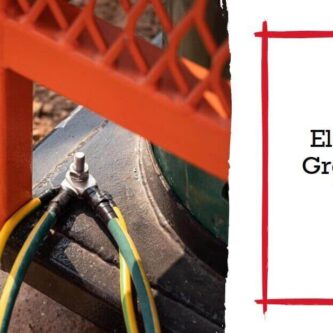Electric wire nuts, also known as wire connectors, are commonly used to connect two or more electrical wires together.
Wire nuts can sometimes melt or even catch fire, which can be dangerous and damaging to your electrical system.
Electric wire nut melting is caused by poor installation, wrong size, overloading, or heat exposure. Proper installation and avoiding these factors can minimize the risk of wire nut melting and ensure safety.
In this article, we will explore the causes of electric wire nut melting, signs to watch out for, and how to prevent and address this issue.
Causes of Electric Wire Nut Melting
There are several reasons why wire nuts can melt, but the most common ones are electrical overload, poor connection, and high temperatures.
Electrical Overload
When an electrical circuit is overloaded, it means that it is carrying more current than it can handle.
This can cause the wires to heat up and eventually melt the wire nut. Overloaded circuits can occur when too many electrical devices are connected to a single circuit, or when a faulty device draws too much current.
To prevent electrical overload, it is important to properly distribute the electrical load across different circuits and devices.
You can also install circuit breakers or fuses to trip when the current exceeds a certain limit, which can protect your wires and devices from overheating.
Read my comprehensive article The Dangers of Overloading Electrical Circuits: Can it Cause a Fire?
Poor Connection
A wire nut that is not properly installed or twisted can create a loose or weak connection between the wires.
This can cause resistance and heat buildup, which can melt the wire nut over time. Poor connections can occur when the wires are not stripped or twisted enough, or when the wire nut is not tightened properly.
To ensure a proper connection, it is important to strip the wires to the right length and twist them tightly together before applying the wire nut.
You can also use pliers to tighten the wire nut, but be careful not to overtighten it, as this can also damage the wires.
For more information read my article Do Poor Electrical Connections Get Hot?
High Temperatures
High temperatures can also cause wire nuts to melt. This can happen when the wires are exposed to heat sources such as light fixtures, motors, or appliances.
The plastic material of the wire nut can melt or even catch fire if it is exposed to temperatures beyond its melting point.
To prevent high temperatures, it is important to avoid installing wire nuts near heat sources and to use wire nuts that are rated for the temperature of the environment.
You can also use heat shrink tubing or electrical tape to protect the wires and wire nuts from heat exposure.
Signs of Electric Wire Nut Melting
There are several signs that can indicate that a wire nut is melting or has already melted. These include:
- Burnt smell: If you smell a burnt odor coming from an electrical outlet or device, it could be a sign that the wire nut has melted.
- Discoloration: If the wire nut or wires appear discolored or blackened, it could be a sign that they have been overheated.
- Visible melting: If you see the wire nut melting or deforming, it is a clear indication that it has been exposed to high temperatures.
- Electrical outages: If you experience frequent electrical outages or circuit breakers tripping, it could be a sign of an overloaded circuit or poor connection caused by a melted wire nut.
How to Prevent Electric Wire Nut Melting
To prevent wire nut melting and ensure a safe and reliable electrical system, you can follow these tips:
Use the Right Wire Nut
Choosing the right wire nut for your wires is crucial to ensure a proper and secure connection.
Wire nuts come in different sizes and types, and you should select the one that matches the wire gauge and type you are using.
Using the wrong wire nut can result in poor connection and overheating.
Strip and Twist the Wires Properly
Before installing a wire nut, make sure to strip the wires to the correct length and twist them tightly together.
The stripped portion of the wire should be long enough to reach the bottom of the wire nut and make a solid connection.
Twisting the wires together creates a secure bond and minimizes the risk of resistance and heat buildup.
Install the Wire Nut Properly
When installing the wire nut, make sure to apply it straight and evenly. Avoid over-tightening the wire nut, as this can damage the wires and cause the nut to loosen over time.
You can use pliers to tighten the wire nut, but be careful not to apply too much force.
Avoid Overloading Circuits
To avoid electrical overload, distribute the electrical load across different circuits and devices.
Do not connect too many devices to a single circuit, and avoid using high-wattage appliances or devices that can draw too much current.
Install circuit breakers or fuses to trip when the current exceeds a certain limit, which can protect your wires and devices from overheating.
Keep Wire Nuts Away from Heat Sources
To prevent wire nuts from melting due to high temperatures, avoid installing them near heat sources such as light fixtures, motors, or appliances.
Use wire nuts that are rated for the temperature of the environment and consider using heat shrink tubing or electrical tape to protect the wires and wire nuts from heat exposure.
Addressing Electric Wire Nut Melting
If you suspect that a wire nut is melting or has already melted, it is important to address the issue promptly to prevent further damage or safety hazards. Here are some steps you can take:
Disconnect Power
Before inspecting or replacing the wire nut, make sure to disconnect the power to the affected circuit or device. This can prevent electrical shock and further damage to your electrical system.
Inspect the Wires and Wire Nut
Inspect the wires and wire nuts for any signs of melting or damage. If the wires are melted or blackened, you may need to replace them.
If the wire nut is melted or deformed, you should replace it with a new one that matches the wire gauge and type.
Install a New Wire Nut
To install a new wire nut, strip the wires to the correct length and twist them tightly together. Apply the wire nut straight and evenly, and tighten it using pliers if necessary. Make sure the wire nut is secure and that the wires are not loose.
Seek Professional Help
If you are not comfortable working with electrical wires or if you suspect a more serious electrical problem, seek the help of a licensed electrician.
They can inspect your electrical system and identify any potential hazards or issues.
Conclusion
Electric wire nut melting can be a serious safety hazard that can damage your electrical system and cause fires or electrical shock.
By understanding the causes and signs of wire nut melting, and following the prevention and addressing steps outlined in this article, you can ensure a safe and reliable electrical system. Remember to always work with caution and seek professional help if necessary.


